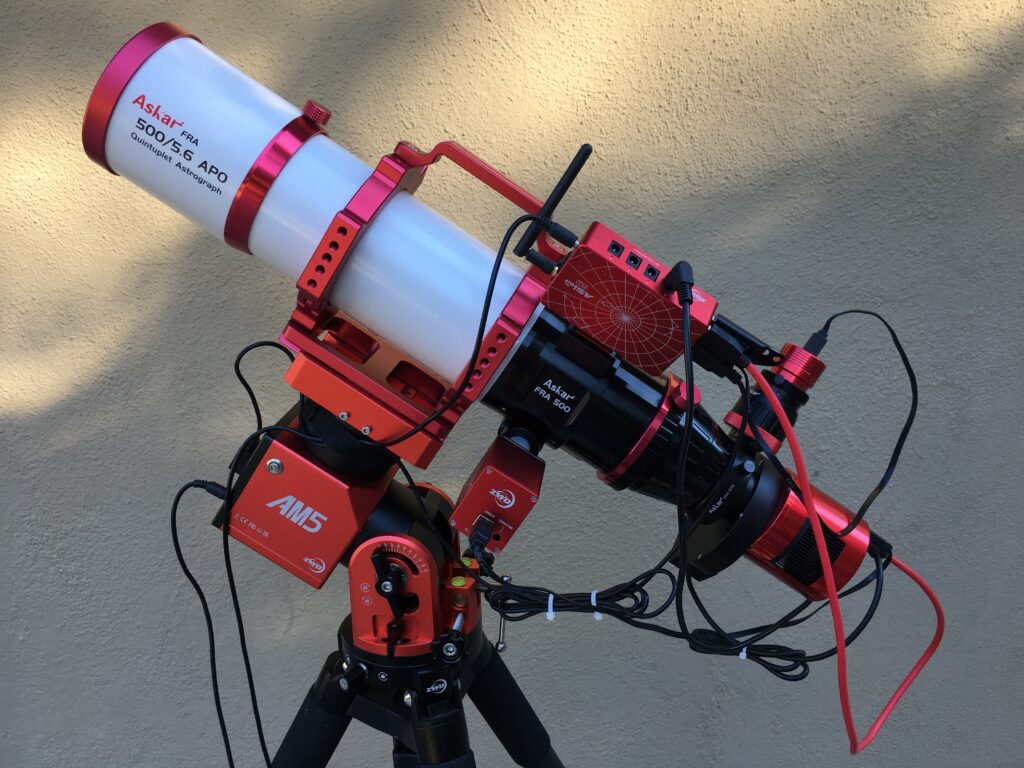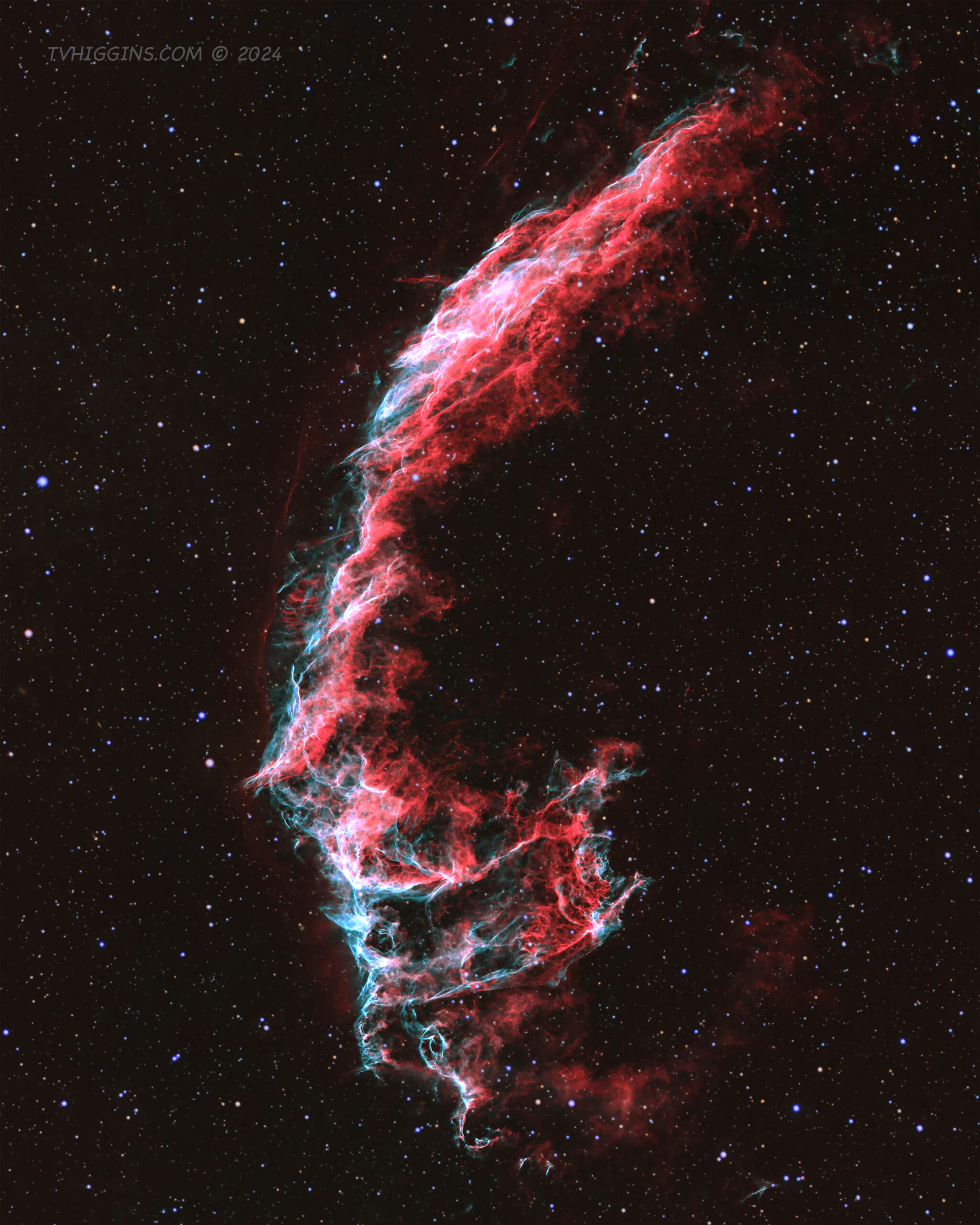New Ultraportable Astrograph
When photographing the cosmos, you often need to pack up and move your imaging gear. Whether you’re chasing an eclipse or an ISS transit or looking to get away from the city for some quality RGB data, sometimes you just have to pick up and go. And that is why I invested in my new ultraportable astrograph pictured above. The entire rig—astrograph, accessories, mount, and tripod—weighs just 33 pounds, and everything you see riding atop the mount fits into a single carry-on.
This is the rig I used to photograph the Cygnus Loop mosaic featured in a recent post (October 19). It consists of a 90-mm Askar FRA 500 quintuplet apochromatic astrograph fitted with a ZWO EAF, an Askar off-axis guider, a ZWO ASI 120-MM Mini guide camera, a ZWO EFW (5-filter Mini), and a ZWO ASI1600-MM Pro imaging camera. Riding atop this whole assembly is a ZWO ASIair controller, which controls everything, including the ZWO AM5 strain-wave mount below it.
The AM5 mount uses an innovative strain-wave gearing technology that frankly I had never heard of before, even though it’s been around for as long as I have. The drive has zero backlash! What’s more, my average guiding accuracy with this drive is 0.4 arcseconds (RMS)! Also, its enormous torque avoids the need for a counterweight with payloads up to 13 kg, and it can handle payloads up to 20 kg with a counterweight.
The Askar FRA 500 utilizes a quintuplet Petzval optical design that employs an apochromatic triplet paired with a field-flattening doublet. The field is the flattest I’ve ever experienced, producing round stars over the entire sensor area of my ASI1600-MM Pro camera, all the way to the corners. The manufacturer (Sharpstar) claims that the flat field of this astrograph can also accommodate full-frame sensors.
The whole rig sits atop a 5-lb ZWO TC-40 carbon-fiber tripod, which I’ve outfitted with three sturdy rubber foot pads to improve its stability even more. The tripod has a load capacity of 50 kg and collapses to a packable length of 500 mm or just over 19 inches.
This little workhorse is not just an ultraportable rig, it also has streamlined my imaging sessions with fully automated features that maximize my imaging time. Polar alignments typically take just two or three minutes, and meridian flips go off without a hitch. I can literally set it and forget it for the night. No more babysitting. If only it would put the lens cap back on the scope for me at the end of the night.

